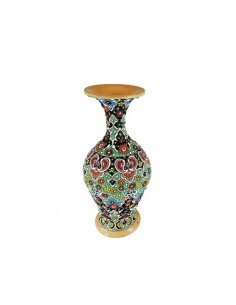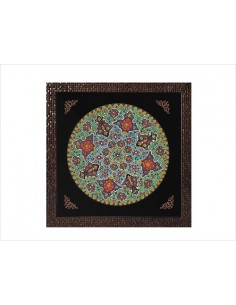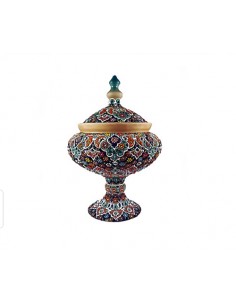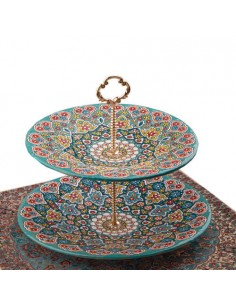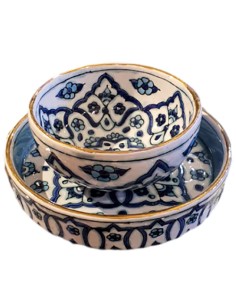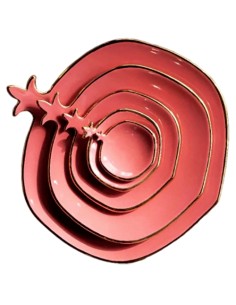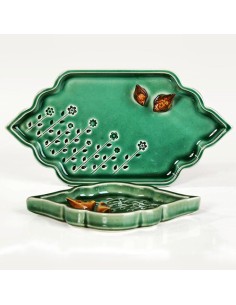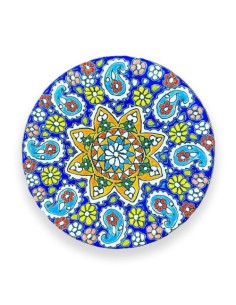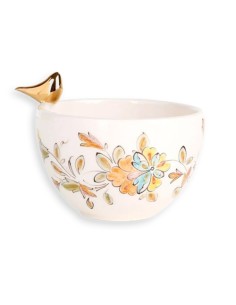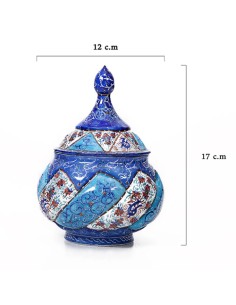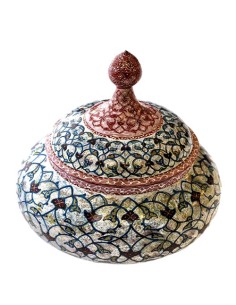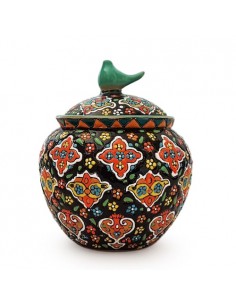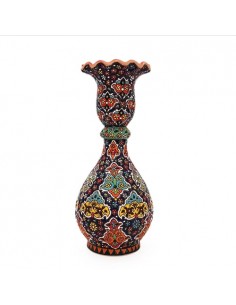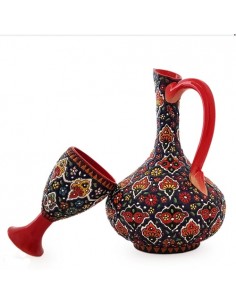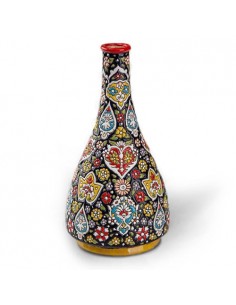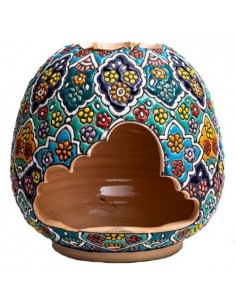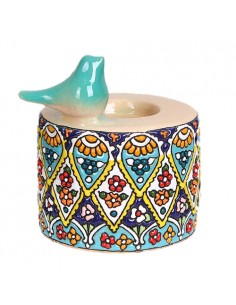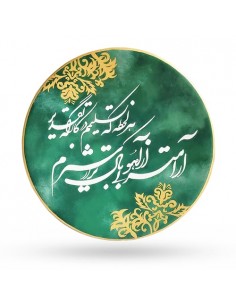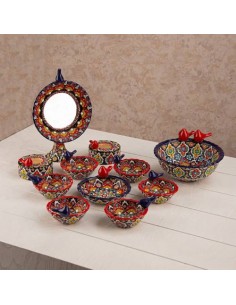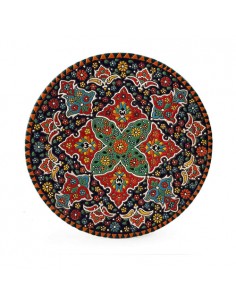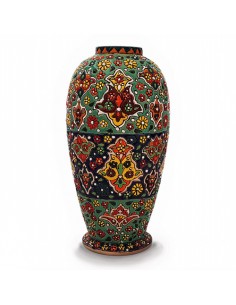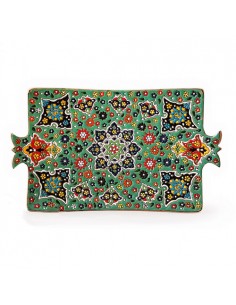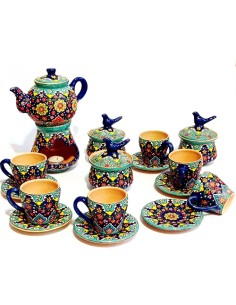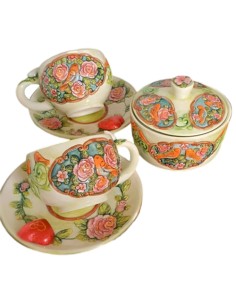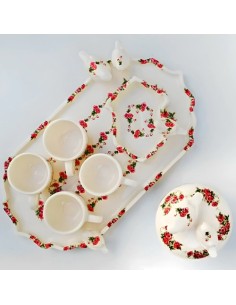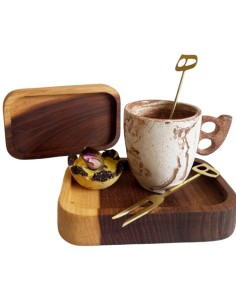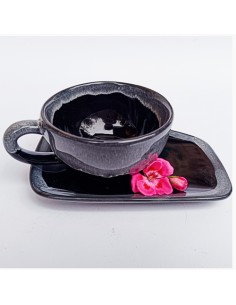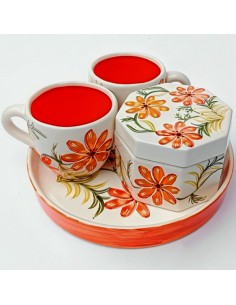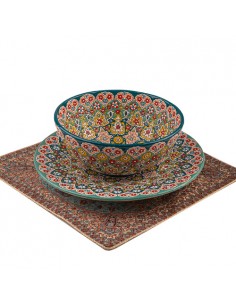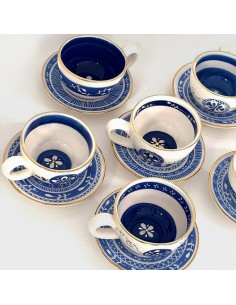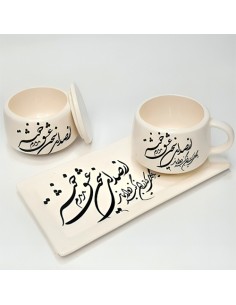Pottery
Pottery is a precious, timeless art whose history dates back to ancient times. The Persian word for Pottery is Sofāl, a "clay container, urn, ceramic, or fired clay." Its making process, called Sofalgari in Persian, makes ceramic products.
What is Pottery? Is It a Fine Art Form?
Pottery is a ceramic that creates practical objects by hand and pottery wheels out of pottery clay. Of course, pottery is an art, but is it a fine art? To answer this question, we should know pottery products; they include dishes and decorative items. Pottery decorative items include sculptures, decorative plates, vases, etc.
One form of fine art is sculpture. So, we can consider pottery sculptures as fine art pieces.
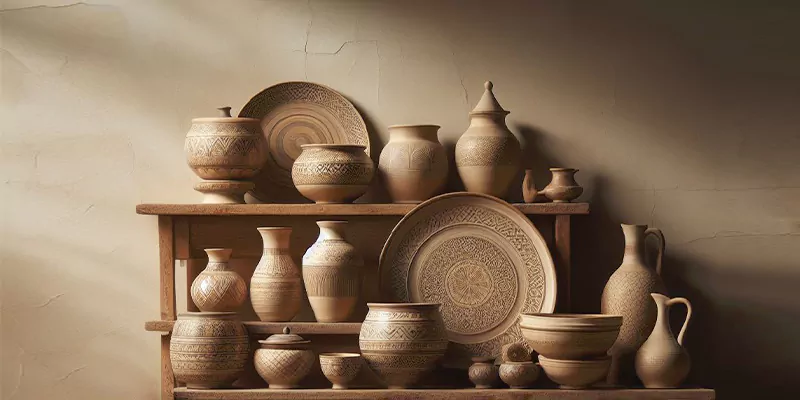
Cyrus Crafts; Luxury & Unique Products
How to Select and Buy Pottery Tableware?
Pottery tableware is a decorative and functional piece of art that you can use for serving and decoration applications. Before selecting and buying pottery products, please keep these tips in mind:
- The price can increase depending on the pottery size and design details.
- Check it carefully to ensure that it has no cracks.
- Before shopping, surf the Internet to get information about the different types of pottery and their price ranges.
- It is better to know different pottery styles before buying one.
- Among all types, vintage pottery is the most popular nowadays.
- Shop from well-known and honest sellers.
A Special Marketplace For Unique & Exquisite Crafts
Pottery Types
Pottery is an ancient technique for producing practical and decorative objects. So, since then, there have been numerous types of pottery in different regions and times. The most popular and well-known pottery types include:
Raku Pottery
Raku is a Japanese pottery made by fast cooling the product once it comes out of the pottery kiln. This process gives it a distinctive shade hue. As it was first created for the tea ceremony, Raku pottery used to be generally found as tea bowls. But nowadays, there are considerable varieties of Raku in the pottery shops.
Majolica
Majolica is an Italian type of pottery that is not made of clay. Majolica's name is derived from Majorca, the Spanish Island. Its material is a heavyweight ceramic earthenware that is richly dyed. Majolica pottery is fully glazed, with no brushstrokes on its surface.
Talavera Pottery or Mexican Pottery
Talavera, or Mexican pottery, is a classic type with a modern look known for its rich colors and complex patterns. The most famous products of Talavera pottery are decorative plates.
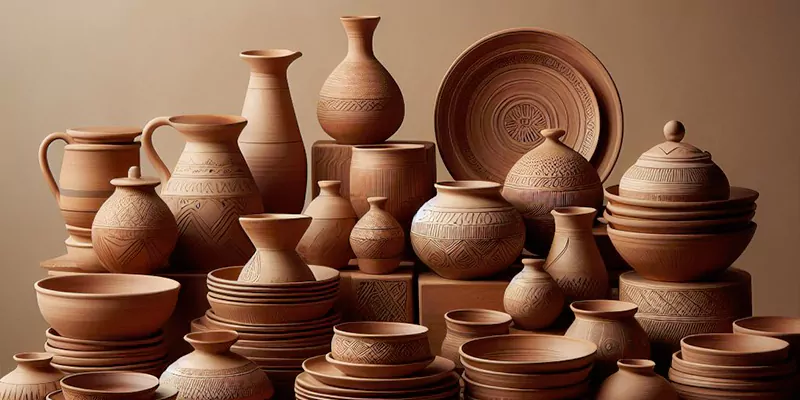
Sofal
Sofal, or Persian pottery, is one of the oldest types of pottery in the world. Persian pottery is known for its detailed designs, such as complex geometrics and Persian miniature paintings. Its raw material is Sofal clay, and the most used color in Sofal products is Persian blue.
Kintsugi Pottery or Japanese pottery
Kintsugi, kintsukuroi, or Japanese pottery, also known as broken Japanese pottery, is a technique that displays the ceramic object like it's broken and then repaired. The repairing paths are mostly golden.
Greek Pottery
Ancient Greek vases are the most famous Greek pottery; you can see their original versions in museums or newly produced in the market. Greek pottery's boldest characteristic is the unique paintings first created by Sophilos in the 6th century.
Handbuilding Pottery
Handbuilding is a pottery technique only with uncomplicated tools and without using pottery wheels. It is an ancient technique and probably the first one. Pinching, coiling, and slab building are three methods of Handbuilding pottery.
Jomon Pottery
Jomon is another ancient Japanese pottery from c. 14,500 - c. 300 BCE. Most archeologists know Jomon pottery as the oldest in the world. It is indicated by the decoration from impressions, which resemble rope.
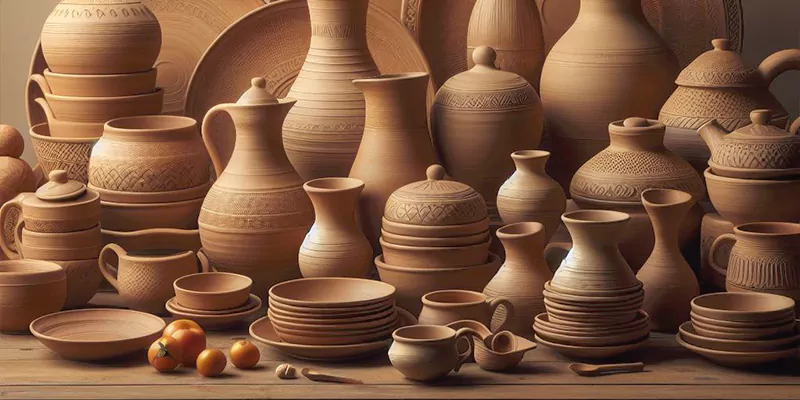
Delftware
Delftware, Delft pottery, and Delft Blue are all names for a characteristic thin glazed blue and white pottery-making technique. The paintings on the Delrware porcelain are mostly Chinese-style paintings.
Native American Pottery
Native American pottery, also known as Navajo or Indian Pottery, is a traditional technique of making pottery created by Navajo Indians of America. It is the art of gathering natural elements on the pottery surface through simple designs.
Roman Pottery
Roman pottery, or Terra Sigillata Ware, is reddish polished pottery dating from the 1st century BC to the 3rd century AD. It is remarkable in its color and Roman painting designs.
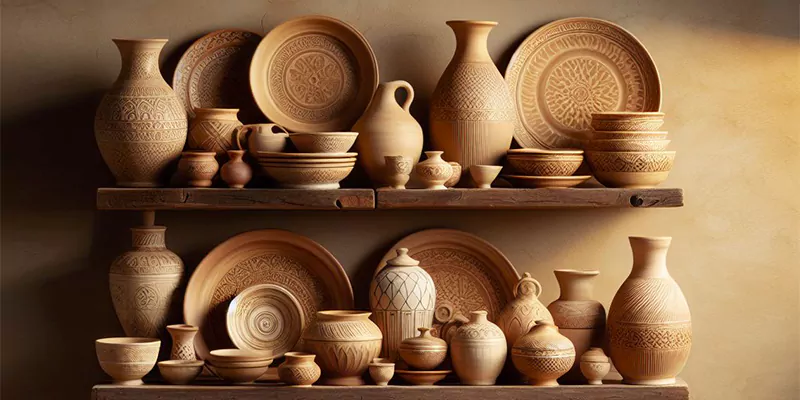
Pottery vs. Ceramic
Pottery is not something other than ceramic. It is a kind of ceramic made of particular pottery clay. Pottery is handmade, but other kinds of ceramic can be mass-produced. Moreover, pottery is more artful because it is created and painted by hand.
Pottery and Ceramic Products
There are many traditional and innovative pottery and ceramic products in the market. Here are the most popular forms of pottery:
- Sculpture
- Ceramic Vase
- Flowerpot
- Tableware
- Ceramic Bowl
- Dinnerware
- Tea Set
- Ceramic Plates
- Decorative plate
- Urns and jugs
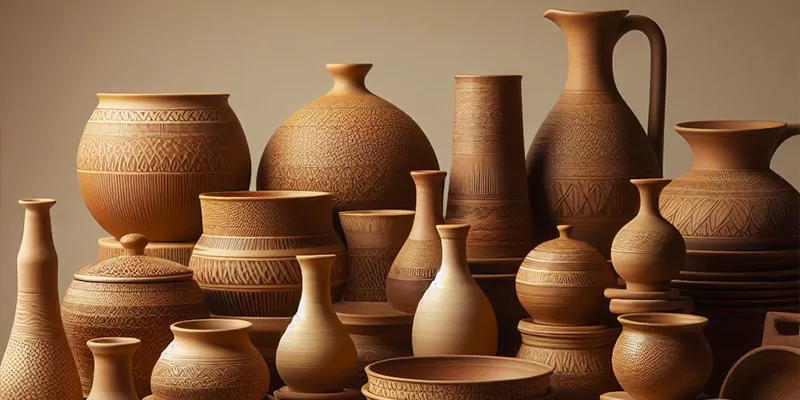
Pottery Price
Fortunately, pottery is not expensive, thanks to its raw material, clay. Pottery price varies depending on the details of the art that the artisan has done while creating it. Pottery products include decorative vases, dishes, pitchers, etc., from $50 to $2000. CyrusCrafts, the Asian handicrafts specialist, offers handmade pottery items with one-of-a-kind designs painted by hand using Minakari techniques at the fairest prices, from $35 to $190.
Is Pottery Worth?
You may wonder if pottery is worth the money you pay for it. Of course, it is. Pottery is an art, not a piece of earthen dish or mass-produced decor item. Persian people say, "Art has no price." It means no one can define a price for a piece of art because it is something beyond.
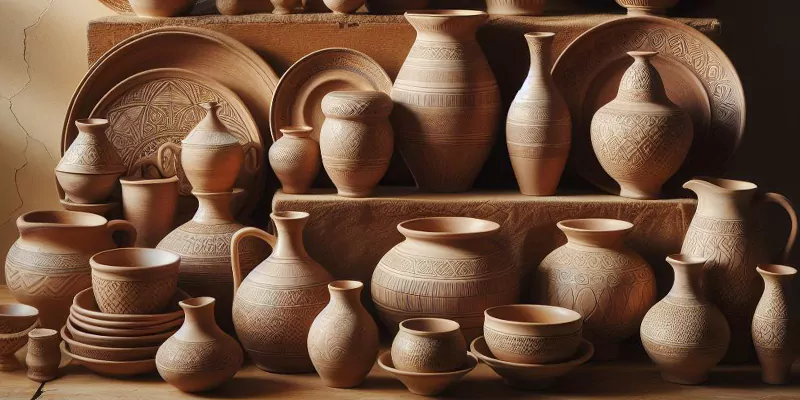
How to Make Pottery and Handmade Ceramics?
Making pottery is straightforward if you know the techniques and have the pieces of equipment. The equipment includes a pottery wheel and small curving tools; you can learn the skills from pottery masters and practice them repeatedly. What you need is pottery clay, your creativity, and your perseverance. You can learn pottery and handmade ceramics techniques from online media like YouTube.
The process of pottery consists of these steps:
- Sifting clay soil
- Removing soil or water impurities
- Mixing clay and water
- Preparing the clay
- Forming the pottery clay with a pottery wheel or other tools
- Letting it dry
- Painting with precise paints
- Baking it in an oven named Kiln
Pottery Painting
Pottery painting is an art, meditation, and therapy technique. You can paint pottery with proper paints with any style and design you like. Psychologists believe that pottery painting is a meditation technique that makes you calm. So go for it if you want a new way to regain your ease.
You just read everything about pottery. If you want a piece of pottery art in your home or workplace, only visit CyrusCrafts handmade pottery items and choose your favorite one. Then, please fill out the order form and wait for us to deliver your orders to the address. CyrusCrafts antique store offers attractive discounts. Moreover, we deliver your orders to the USA and Canada addresses more quickly.


